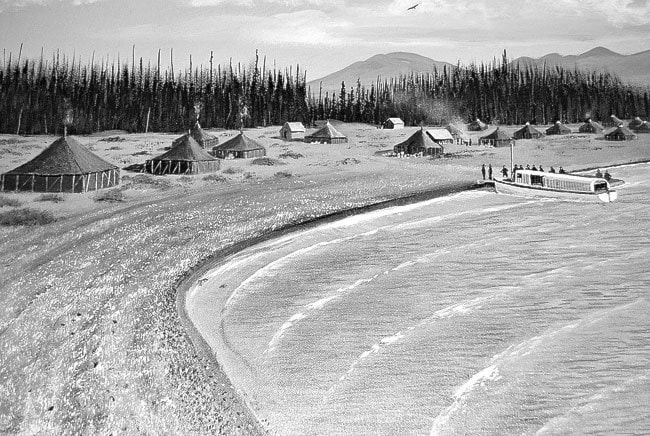It was mid-September 1942, when First Sergeant Bill Logan called a special meeting of the US Army C Company, which was working on constructing the Alaska Highway.
They were months into a tough job of battling both muskeg and mosquitoes and the men were tired
“We have a special job to do,” said the sergeant, eliciting a murmur of disapproval from the crowd gathered in the centre of the makeshift camp. Looks of disgust crossed their weary faces.
“A non-com (army slang for a non-commissioned officer) will take about eight men with full field packs into the mountains above camp on a special detail,” he continued. “Each man will be armed with plenty of ammo.”
There was another worried murmur from the men, and then Logan added: “This detail will be gone for three days, and it had better bring us back some meat.”
Suddenly the mood changed. Smiles came to the men’s faces, according to the story recounted in the diary of John Paxton, a US Army corporal who came to the Yukon in 1942 to build the route that would connect Alaska to
the Lower 48.
While on the job, Paxton, an amateur photographer, took dozens of candid pictures of life on the highway.
Some show army jeeps mired in mud and muck, others show soldiers peeling potatoes, waiting in food lines and playing their favourite Dinah Shore records on the phonograph, which Paxton called the “morale box.”
At the time, the US Army prohibited non-official photography of its operations and Paxton’s camera was eventually impounded.
Luckily, Paxton had shot 24 rolls of film and smuggled them out with a friend, who left them with Paxton’s parents in California.
He later used the photographs to create a series of six oil paintings chronicling life on the highway, which were donated to the MacBride Museum of Yukon History by his family in 2004.
Paxton, like many other American men, joined the 18th Army Corps of Engineers during the Second World War. Instead of being shipped off to fight on foreign soil he was sent to the Yukon to help build the highway, a job
that took the better part of a year.
After sailing to Alaska in a “tub” and riding the White Pass and Yukon Route railway inland, Paxton and the other army recruits arrived in Whitehorse with a clamour.
“At Whitehorse on the magnificent Yukon River, we detrained from the lurching coaches and stepped out into several inches of mud, while the populace of the settlement looked on curiously,” Paxton wrote.
“Whitehorse’s very lean economy was rejuvenated by army payday money, which bought a lot of liquor, big thick steaks and private rations for snacks in our squad tents.”
Soon after their arrival, the company headed out to cut a swath through the Yukon wilderness which would become the Alaska Highway.
“We met not only the stubborn resistance of geological phenomena, but other ‘foes’ such as the relentless hordes of mosquitoes that harassed us for many weeks during the summer,” wrote Paxton.
“There is a prominent gag about the mechanic at the Whitehorse airport on the mesa who put 650 gallons of fuel into the ‘tank’ of one of these interceptors before he discovered that it was merely a mosquito and not a P-40 or
P-38 fighter.”
Ten months after he came to the Yukon Paxton left the territory. He settled in his hometown of Fresno, California, where he died in 1998.
This column is provided by the MacBride Museum of Yukon History. Each week it will explore a different morsel of Yukon’s modern history. For more information, or to comment on anything in this column e-mail
lchalykoff@macbridemuseum.com.
